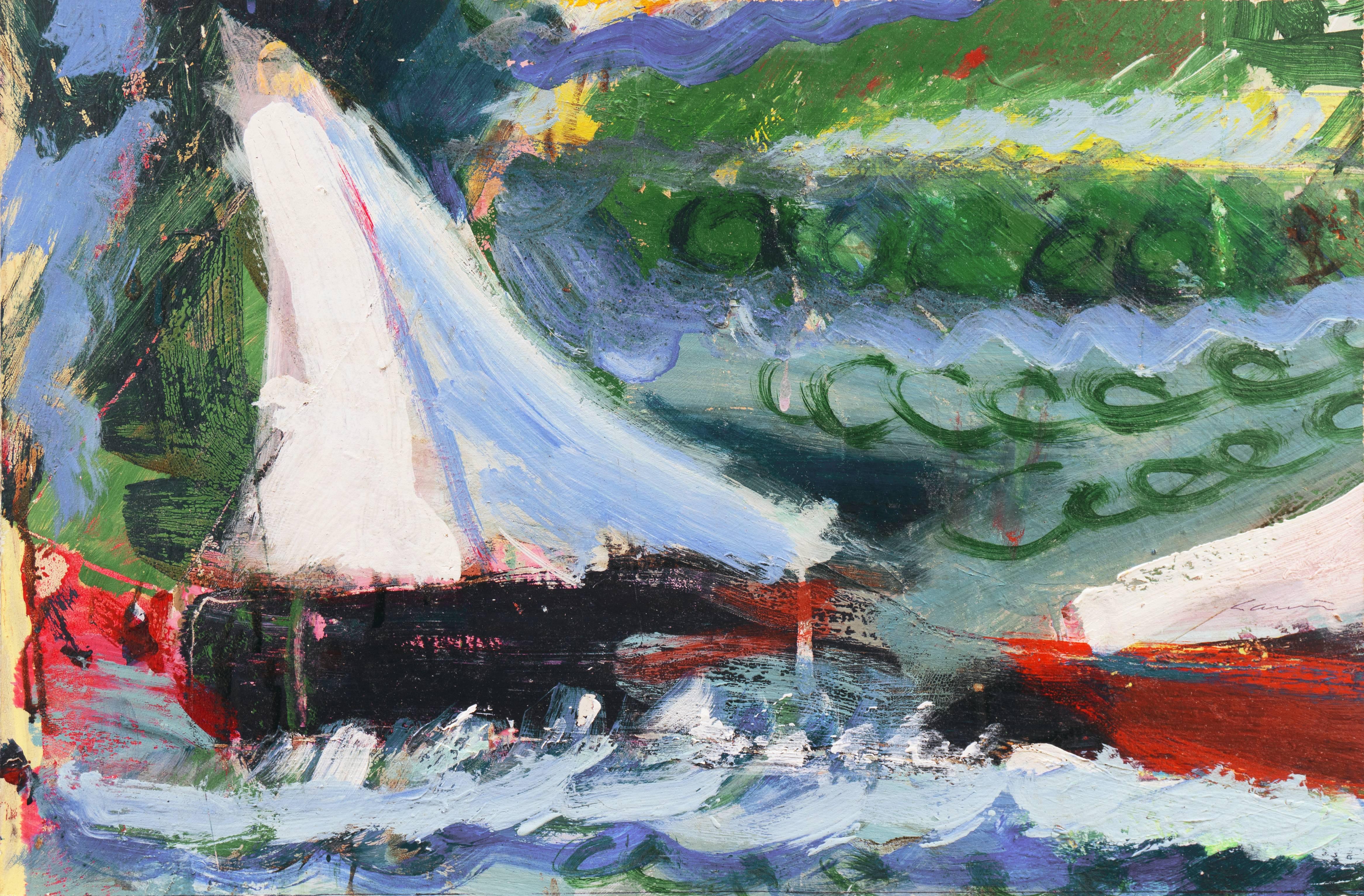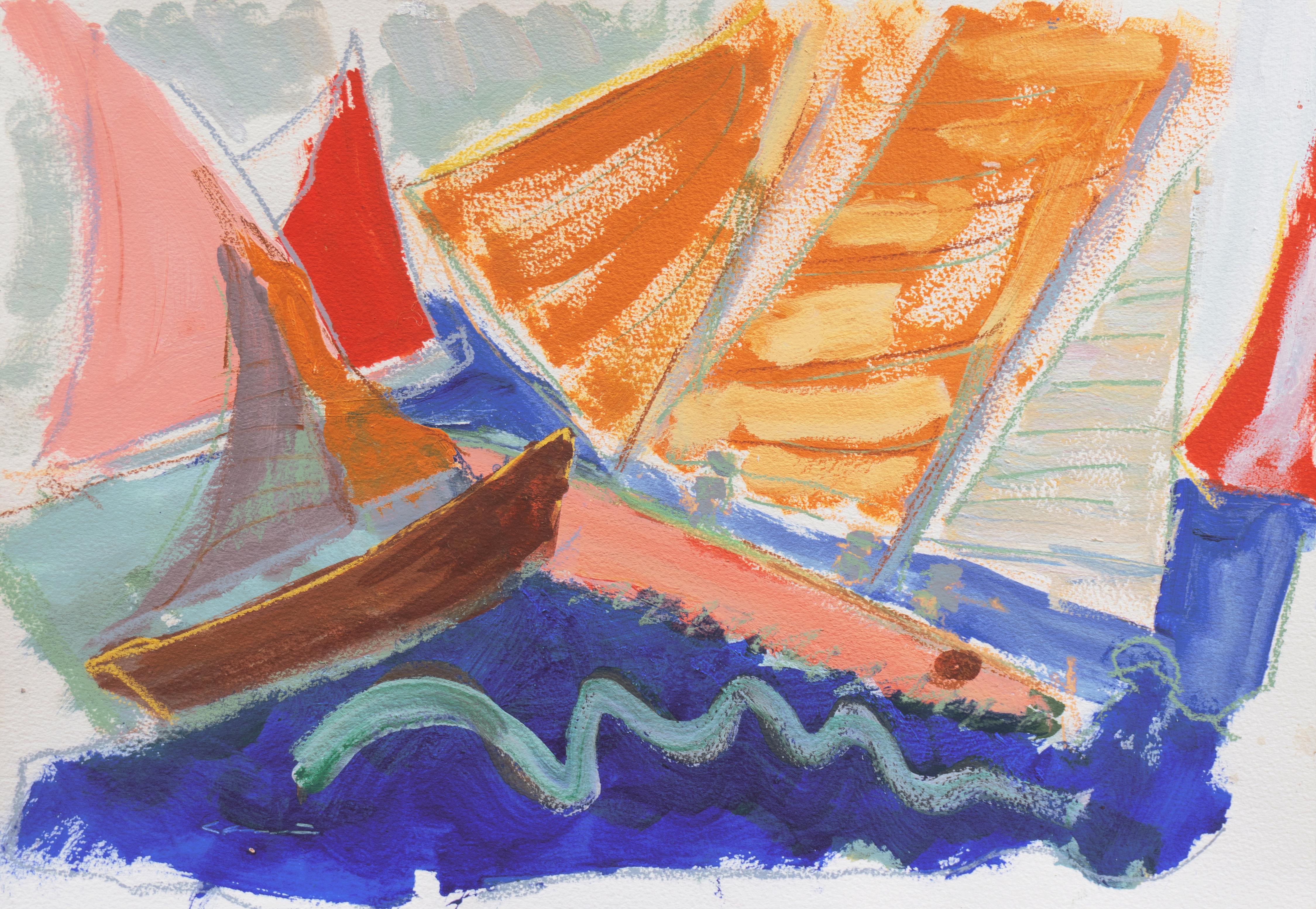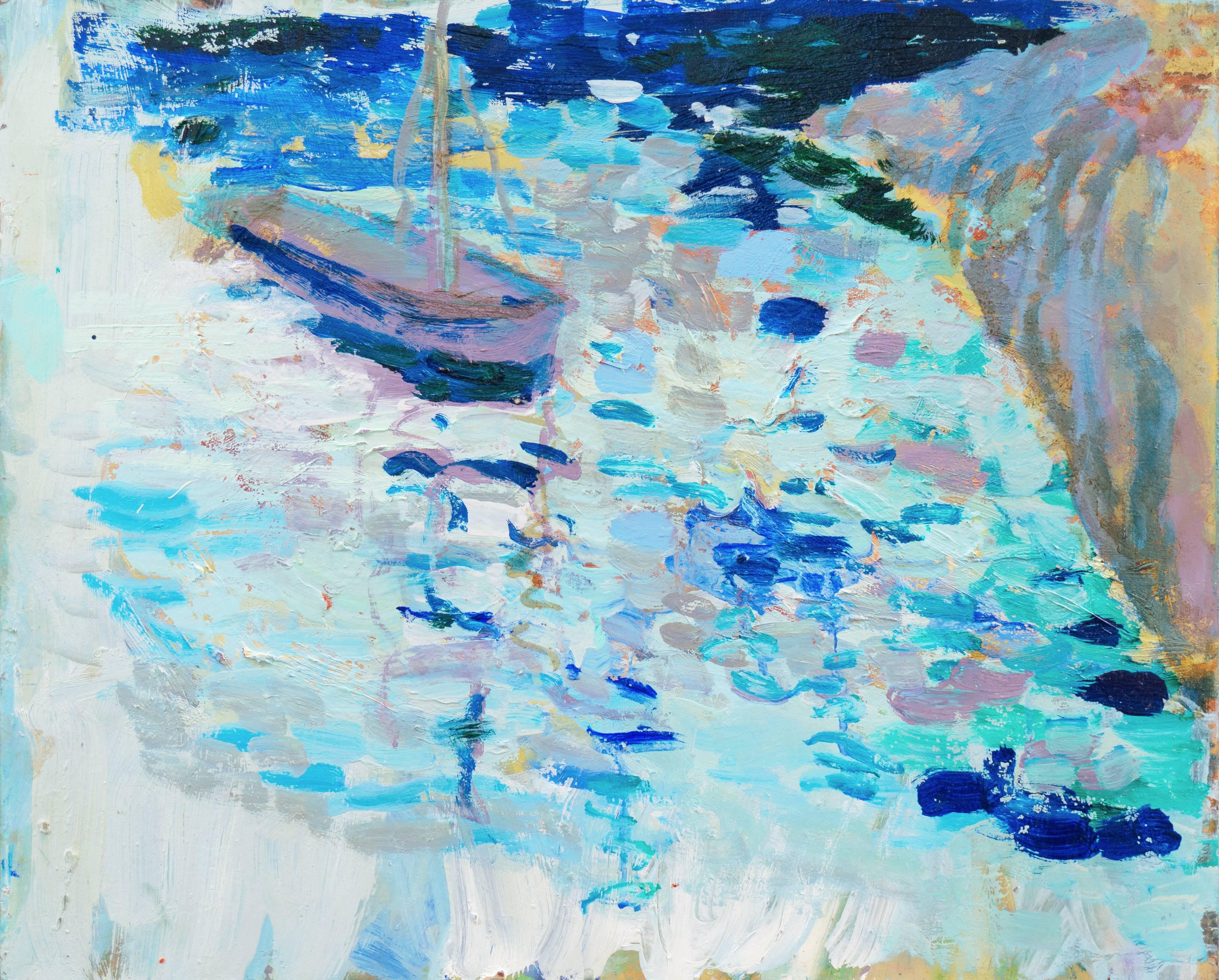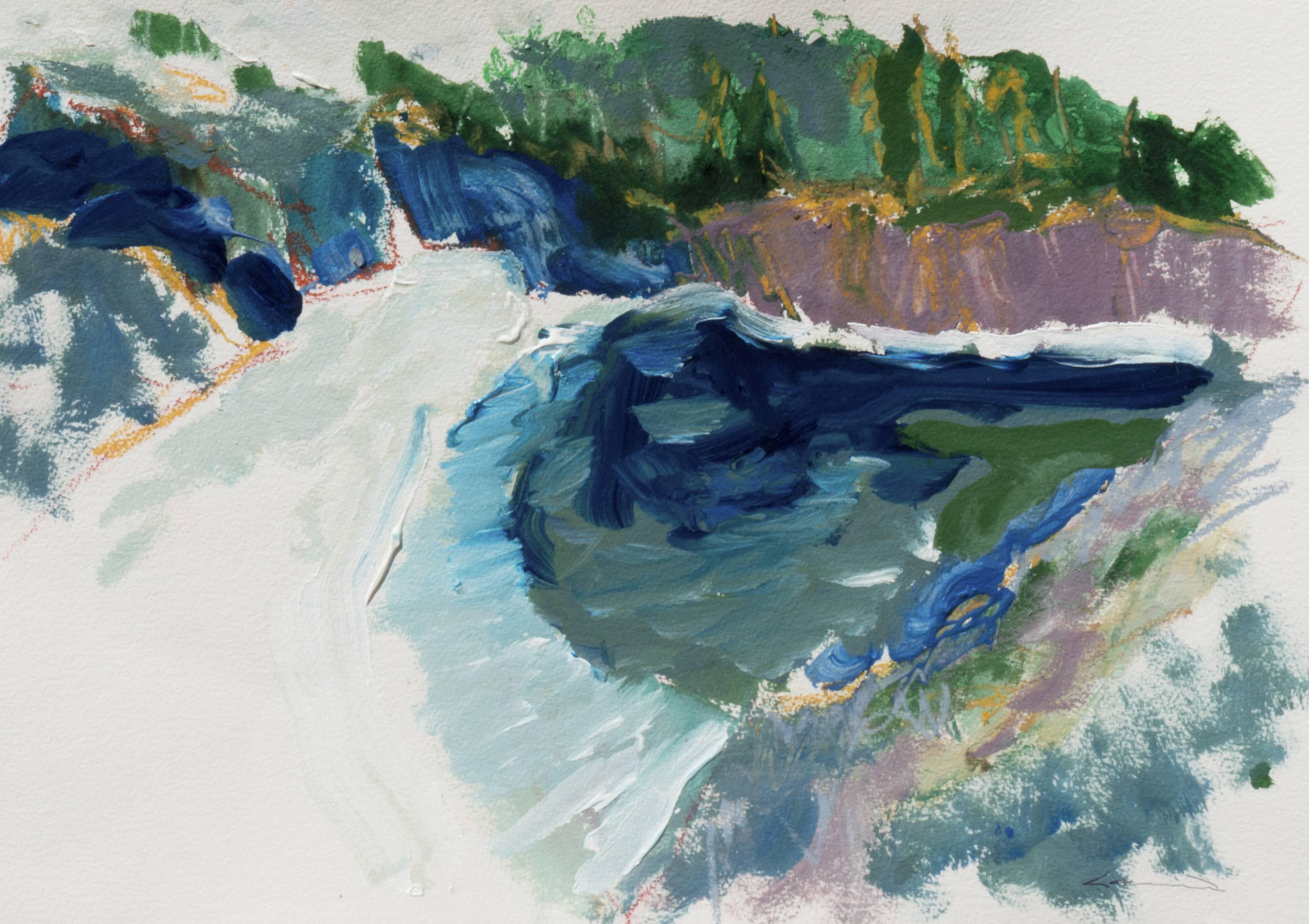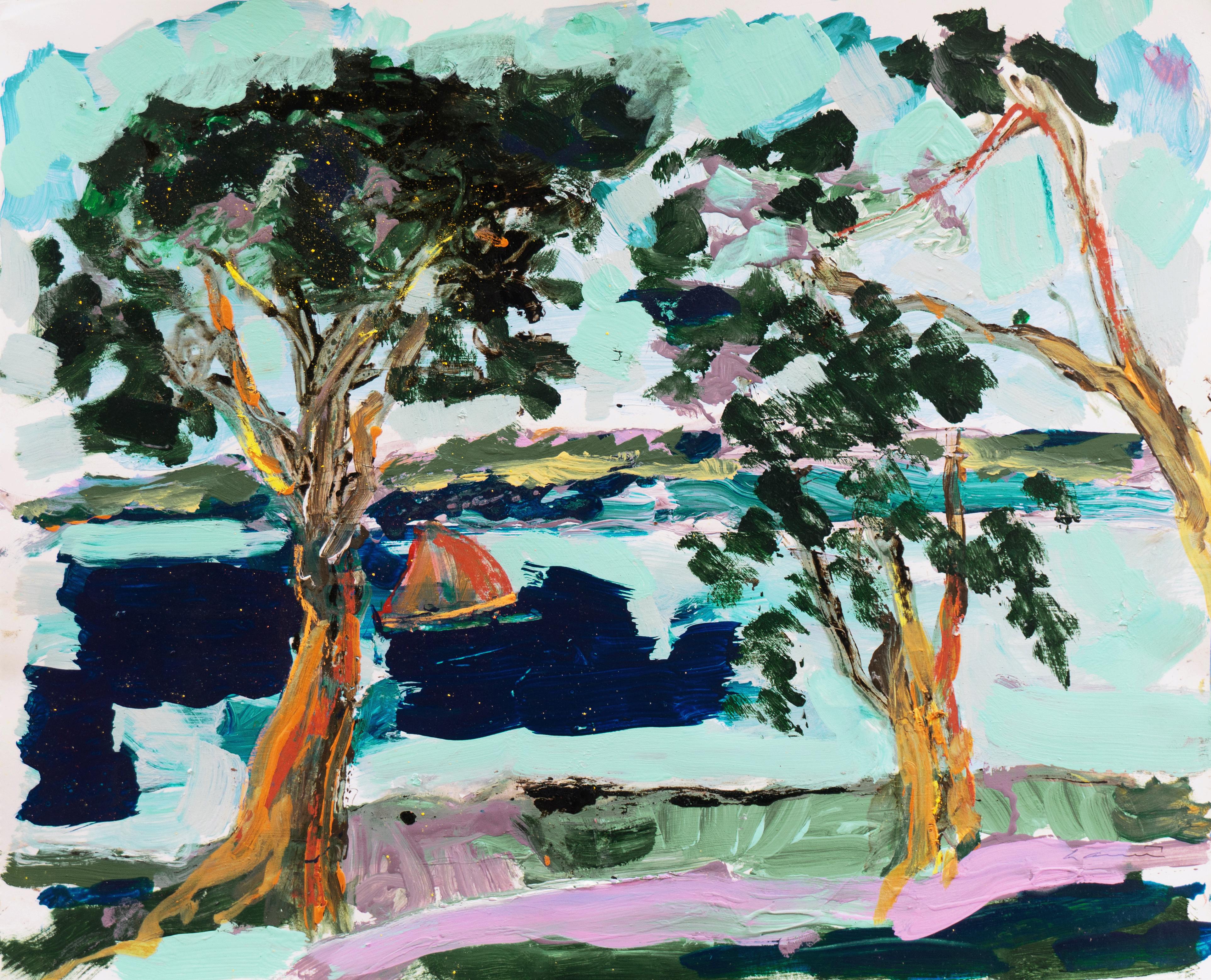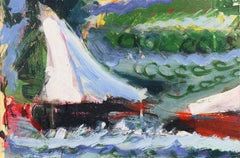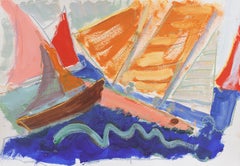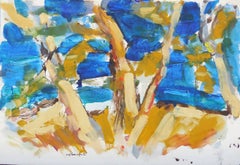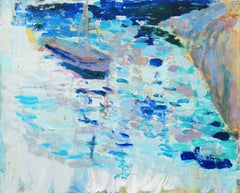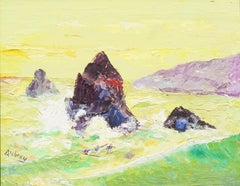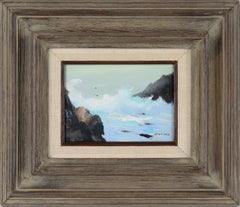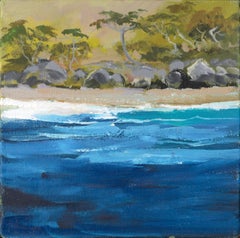Items Similar to 'Breaking Waves Off Monterey', California Expressionist Oil Seascape, Carmel
Want more images or videos?
Request additional images or videos from the seller
1 of 12
Robert Canete'Breaking Waves Off Monterey', California Expressionist Oil Seascape, CarmelCirca 1985
Circa 1985
$3,500
£2,688.92
€3,089.54
CA$4,923.18
A$5,530.98
CHF 2,889.94
MX$67,508.15
NOK 36,693.84
SEK 34,539.52
DKK 23,055.29
About the Item
Signed lower left "Canete" for Robert Canete (American, born 1948), and painted circa 1990. This Carmel artist first studied with Vincent Rascon in the 1960s and, later, with Dwight Miller at Stanford.
An Expressionist-style seascape showing a view of the Pacific Ocean with big waves breaking off the coast of Monterey's Asilomar Beach. Bold, forward composition combines with gestural brushwork and a vibrant palette to form this dynamic work.
- Creator:Robert Canete (1948, American)
- Creation Year:Circa 1985
- Dimensions:Height: 16.13 in (40.98 cm)Width: 20 in (50.8 cm)Depth: 0.13 in (3.31 mm)
- Medium:
- Movement & Style:
- Period:
- Condition:minor restoration, minor marks; unframed.
- Gallery Location:Santa Cruz, CA
- Reference Number:1stDibs: LU3444775362
About the Seller
5.0
Platinum Seller
Premium sellers with a 4.7+ rating and 24-hour response times
Established in 1982
1stDibs seller since 2013
743 sales on 1stDibs
Typical response time: 1 hour
- ShippingRetrieving quote...Shipping from: Santa Cruz, CA
- Return Policy
Authenticity Guarantee
In the unlikely event there’s an issue with an item’s authenticity, contact us within 1 year for a full refund. DetailsMoney-Back Guarantee
If your item is not as described, is damaged in transit, or does not arrive, contact us within 7 days for a full refund. Details24-Hour Cancellation
You have a 24-hour grace period in which to reconsider your purchase, with no questions asked.Vetted Professional Sellers
Our world-class sellers must adhere to strict standards for service and quality, maintaining the integrity of our listings.Price-Match Guarantee
If you find that a seller listed the same item for a lower price elsewhere, we’ll match it.Trusted Global Delivery
Our best-in-class carrier network provides specialized shipping options worldwide, including custom delivery.More From This Seller
View All'Sailing off Monterey', Carmel, California Post-Impressionist Seascape, Stanford
By Robert Canete
Located in Santa Cruz, CA
A bold and animated seascape showing a view of a sailing boat in waves off the California coast.
Signed center right, 'Canete' and painted circa 2000.
This Carmel artist studied wi...
Category
Early 2000s Modern Landscape Paintings
Materials
Oil, Board
'Off Monterey', California Expressionist Oil, Stanford, Carmel, Pacific Sailing
By Robert Canete
Located in Santa Cruz, CA
Signed lower left, 'Canete' for Robert Canete (American, born 1948) and painted circa 2000.
Bob Canete studied with Vincent Rascon in the 1960's and, later, with Dwight Miller at St...
Category
21st Century and Contemporary Expressionist Landscape Paintings
Materials
Paper, Oil Pastel, Oil
'Carmel Coast', California Post-Impressionist Oil Seascape, Stanford, Monterey
By Robert Canete
Located in Santa Cruz, CA
Signed lower left, 'Canete' for Robert Canete (American, born 1948) and painted circa 2005.
A lyrical Expressionist-style seascape showing the Pacific ocean off Carmel, California, ...
Category
21st Century and Contemporary Expressionist Landscape Paintings
Materials
Oil, Handmade Paper
'Off Monterey', American Post-Impressionist Oil, Carmel, Stanford
By Robert Canete
Located in Santa Cruz, CA
Signed upper right "Canete" for Robert Canete (American, born 1948) and painted in 2015.
A lyrical, oil seascape showing a small sailing boat on the limpid turquoise waters of the...
Category
2010s Post-Impressionist Landscape Paintings
Materials
Oil, Board
'Hidden Cove, Big Sur', Carmel, California Post-Impressionist Seascape, Stanford
By Robert Canete
Located in Santa Cruz, CA
Signed lower right, Canete' for Robert Canete (American, born 1948) and painted circa 2000.
Post-Impressionist-style coastal scene showing waves rolling in past lavender cliffs ont...
Category
21st Century and Contemporary Post-Impressionist Landscape Paintings
Materials
Acrylic, Handmade Paper
'Monterey Coast', Carmel Expressionist Landscape, Stanford, California Oil
By Robert Canete
Located in Santa Cruz, CA
Signed lower right, 'Canete' for Robert Canete (American, born 1948) and painted circa 2000.
This Carmel artist studied with Vincent Rascon in the 1960's and later with Dwight Mille...
Category
21st Century and Contemporary Expressionist Landscape Paintings
Materials
Paper, Oil Pastel, Oil
You May Also Like
Monterey Bay Impressionist Seascape
Located in Soquel, CA
Gorgeous impressionistic landscape of Monterey Bay in green hues by Arizona artist Lenore Aubrey-Grebles (American, 1917-2008), circa 1980. Palette knife ...
Category
1980s American Impressionist Landscape Paintings
Materials
Masonite, Oil
Crashing Waves - Big Sur Coastal Cove Original Oil on Masonite
By Stephen John Skerce
Located in Soquel, CA
Crashing Waves - Big Sur Coastal Cove Original Oil on Masonite
Dramatic small-scale, professionally framed seascape by Stephen John Skerce (American, 1926-2010). Waves crashing into a Big Sure Cove and Seagulls gliding on the wind currents. Well known for many years on the Monterey coast for his seascapes and beach scenes.
Signed "Skerce" in the lower right corner.
Signed "Stephen Reno Skerce" on verso,
with the artists Mountain View Studio stamp on frame.
Presented in a wood frame with a linen liner.
Frame size: 12.5"H x 14.75"W
Board size: 5"H x 7"W
Stephen John Skerce (American, 1926-2010) was a painter from Monterey, California. He received his formal art training from the Chicago Art Institute, Salinas Art School, and the Academie Julien in Paris, France. He is known for his landscapes, seascapes, and harbor scenes. He was an artist with both the Valley Art Gallery in Salinas and Venture Gallery in Monterey. He was also served in the US Marine Corps.
Category
1980s American Impressionist Landscape Drawings and Watercolors
Materials
Masonite, Oil
"The Waves 09.28.2024" oil painting of ocean wave breaks, whitecaps, framed
By Nelson H. White
Located in Sag Harbor, NY
The Waves 09.28.2024 is an oil painting by American Impressionist Nelson H. White. A calm blue sky meets the ocean in a the distant horizon. Waves break in the foreground, forming white-caps, painted in thick white strokes, connotting the chaotic crash of a wave.
Signed "Nelson H. White 2024" in lower right corner
Frame Dimensions 9 x 16in
Framed in a custom Italian gold leaf frame.
Nelson H. White was born in New London, Connecticut in 1932. White has been surrounded by art and artists from the time he was born. He received his earliest art instruction from his grandfather, Henry Cooke White (1861-1952) and his father Nelson Cooke White (1900-1989), both important American artists. The family lived in Waterford, Connecticut and the elder White had been an early member of the art colony in Old Lyme, Connecticut. Known for his paintings of the Connecticut landscape and shoreline, Henry Cooke White became a teacher to his son, Nelson Cooke White. Living with his parents at the Florence Griswold house in Old Lyme, he met some of the most important and influential artists of the day, Childe Hassam, Will Howe Foote...
Category
21st Century and Contemporary Realist Landscape Paintings
Materials
Oil, Panel
Monterey Seascape #12 - "The Landing"
By Kathleen Murray
Located in Soquel, CA
Vibrant miniature landscape by Kathleen Murray (American, (American, b. 1958). Signed "MURRAY" in the lower left corner, but it is very difficult to read due to the color. "#12 The Landing...
Category
2010s American Impressionist Landscape Paintings
Materials
Canvas, Oil, Cardboard
"Rolling Seas", San Mateo Coast Landscape by Hartzell Harrison Ray
By Hartzell Harrison Ray
Located in Soquel, CA
Beautiful seascape by California artist Hartzell Harrison Ray (American, 1896-1991). Signed H. Ray lower right. Titled "Rolling Sea" on verso. Unframed. Image, 24"H x 36"W.
Dr. Hartzell Harrison Ray was Born in Kansas on June 10, 1896. Ray was a long-time resident of San Mateo...
Category
1970s American Impressionist Landscape Paintings
Materials
Canvas, Oil
Portskerra by Jonathan Shearer - Landscape oil painting, waves, sea, blue tones
By Jonathan Shearer
Located in Paris, FR
Portskerra is a unique oil on canvas painting by contemporary artist Jonathan Shearer, dimensions are 70 × 100 cm (27.6 × 39.4 in).
The artwork is signed, sold unframed and comes wit...
Category
2010s Contemporary Landscape Paintings
Materials
Canvas, Oil
